KEF proudly partnered with filmmaker Titus Kaphar for the Los Angeles premiere of his film Exhibiting Forgiveness at the Gagosian Gallery in Beverley Hills. Journalist Marc Spiegler, who was director of Art Basal in Switzerland and who is ranked in the Top 25 of ArtReview’s most influential people in the art world sat down with Kaphar the night after the film’s premiere to talk about the film, music and KEF’s involvement in the project.
Below L-R: Aunjanue Ellis-Taylor, John Earl Jenks, Titus Kaphar, Andra Day
Below L-R: Aunjanue Ellis-Taylor, John Earl Jenks, Titus Kaphar, Andra Day
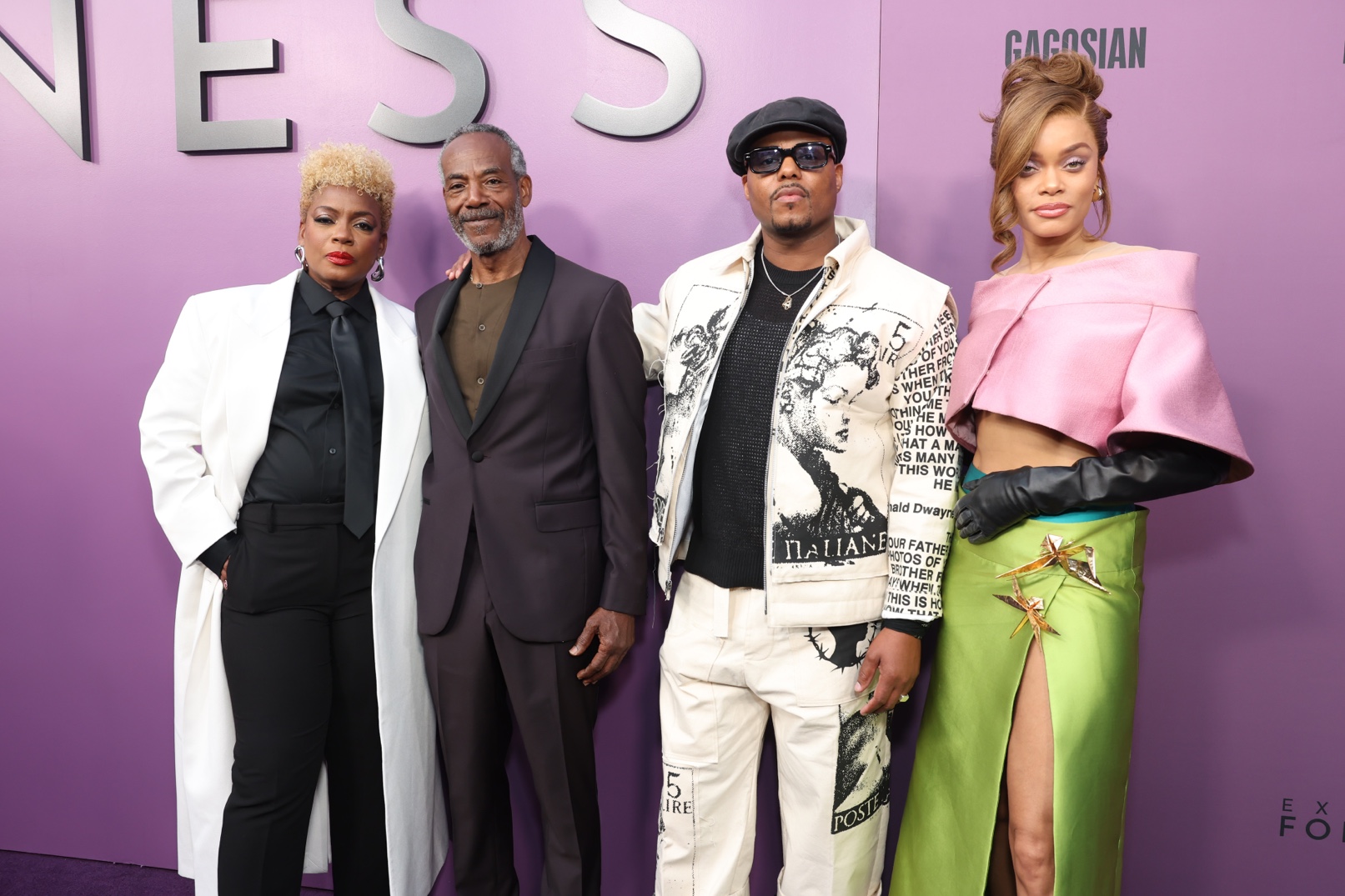
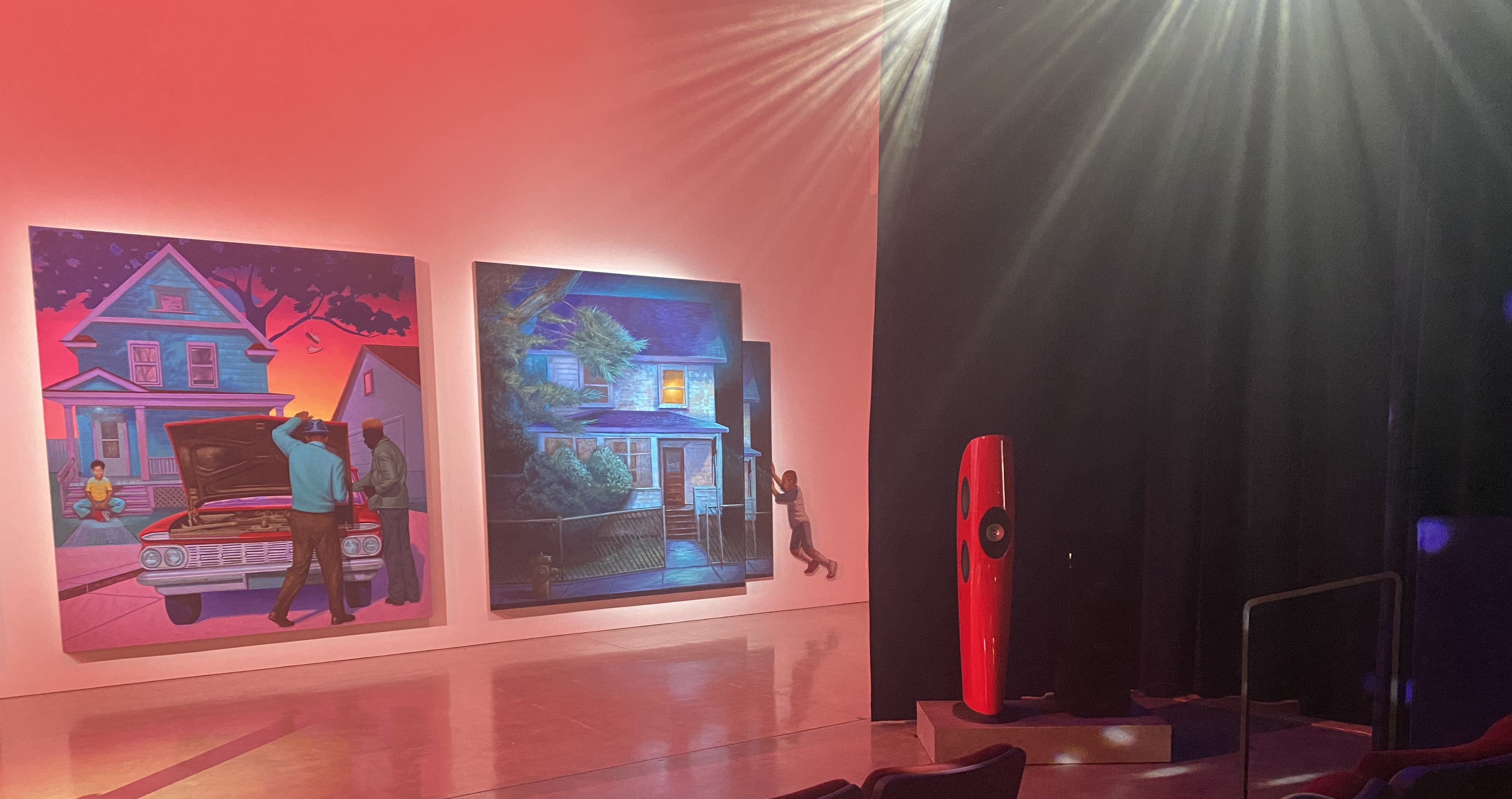
MS: We're talking about music and sound for Exhibiting Forgiveness with Titus Kaphar. You mentioned last night that your first art endeavor was as a bass player. So, I'm curious, tell me about your background as a musician.
Kaphar: I started when I was in high school, and my brother and I started a band, and it was all we wanted to do. I literally slept with my bass guitar at that time. I was only listening to hip hop music and then my brother introduced me to Red Hot Chili Peppers. They were the gateway band for me. That opened things up to other genres of music. My mother always listened to R&B and funk and a lot of traditionally black music. But I myself [was always] a little bit rebellious. So, my mother was only listening to hip hop until my brother brought me that that Red Hot Chili Peppers tape. This was the album they worked with Rick Rubin on, the first one. Then once that happened I went into all the other albums but yeah, they were the gateway band for me.
Kaphar: I started when I was in high school, and my brother and I started a band, and it was all we wanted to do. I literally slept with my bass guitar at that time. I was only listening to hip hop music and then my brother introduced me to Red Hot Chili Peppers. They were the gateway band for me. That opened things up to other genres of music. My mother always listened to R&B and funk and a lot of traditionally black music. But I myself [was always] a little bit rebellious. So, my mother was only listening to hip hop until my brother brought me that that Red Hot Chili Peppers tape. This was the album they worked with Rick Rubin on, the first one. Then once that happened I went into all the other albums but yeah, they were the gateway band for me.
MS: Today you're primarily thought of as a painter, and now a film director as well. I'm curious when you're painting, what is the role of music in the studio?
Kaphar: I almost always have music going in the studio and it varies quite a bit, based on the mood I need for the painting. If I have an active, energetic painting I might actually need something that is the opposite of that energy, to make sure that I'm not just taken off of a bridge. Like you can give yourself over to an energy that a painting is giving you and you find that you are adding to what's there and if you're not careful you lose the line in between. That, I think, is the gift of the Muses and then you’re just trying to push it forward. So oftentimes I will just put on music that feels a little bit opposite to the energy I'm feeling to make sure I can still clearly hear whatever is floating from above.
Andra Day sings 'Bricks' from the Exhibitng Forgiveness soundtrack at the Los Angeles premiere.
Kaphar: I almost always have music going in the studio and it varies quite a bit, based on the mood I need for the painting. If I have an active, energetic painting I might actually need something that is the opposite of that energy, to make sure that I'm not just taken off of a bridge. Like you can give yourself over to an energy that a painting is giving you and you find that you are adding to what's there and if you're not careful you lose the line in between. That, I think, is the gift of the Muses and then you’re just trying to push it forward. So oftentimes I will just put on music that feels a little bit opposite to the energy I'm feeling to make sure I can still clearly hear whatever is floating from above.
Andra Day sings 'Bricks' from the Exhibitng Forgiveness soundtrack at the Los Angeles premiere.
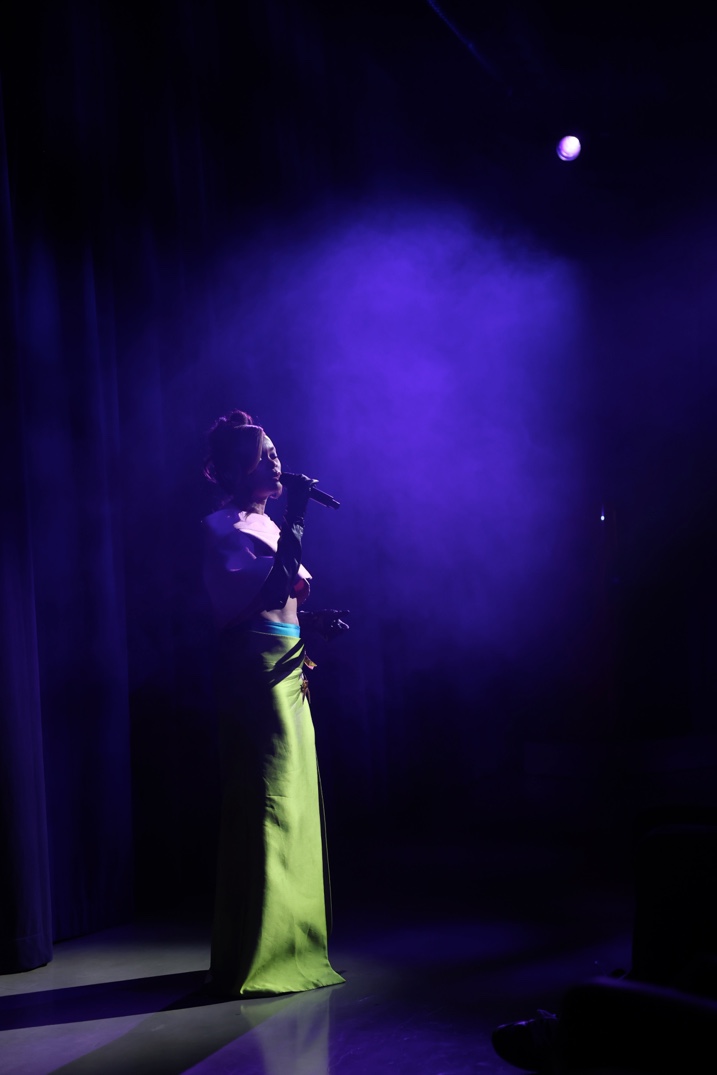
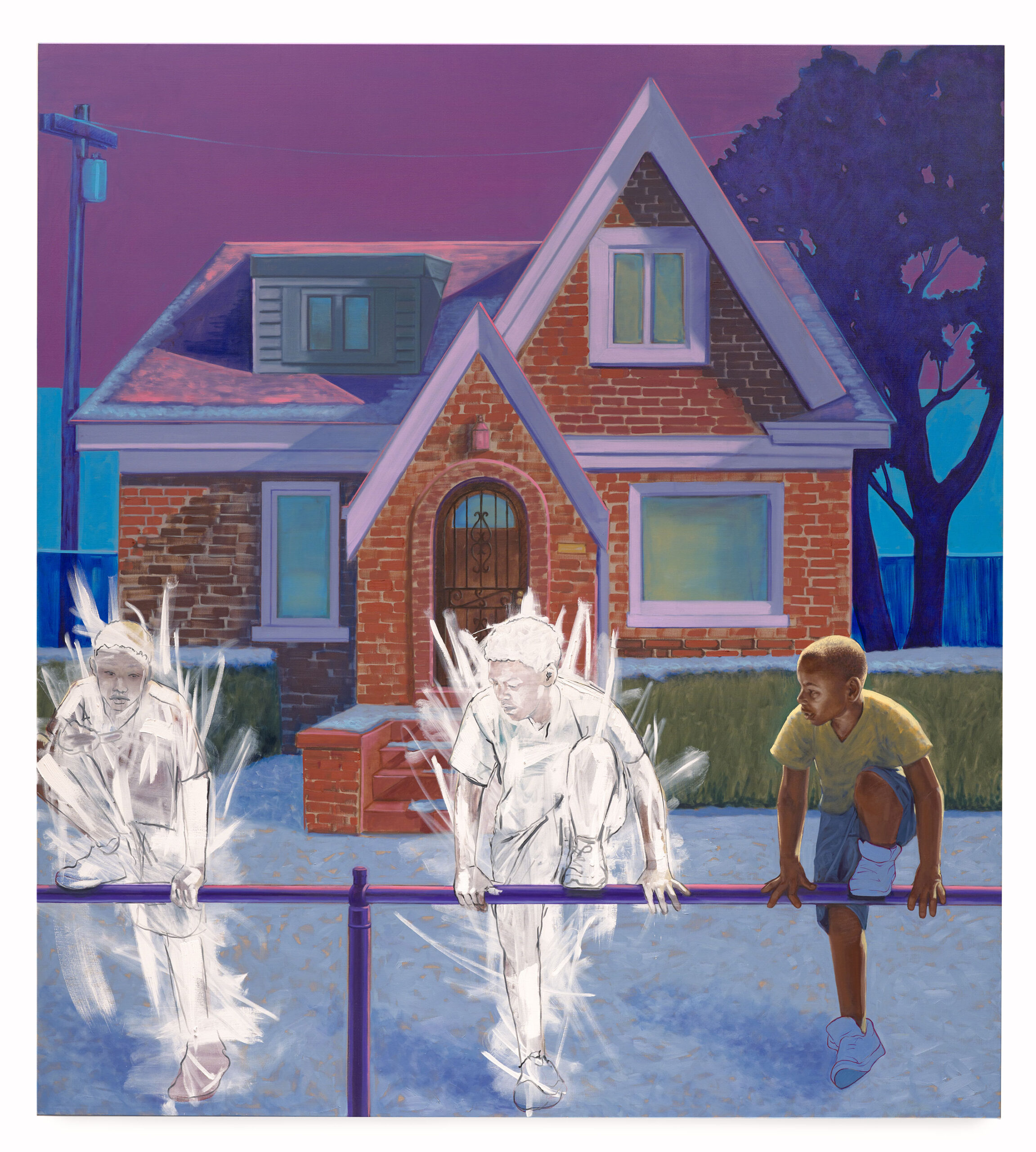
MS: That raises a follow up question, what do you do when the canvas is blank?
Kaphar: I mean, it always starts as a blank canvas. The fortunate thing with technology today is getting the song you need is just a matter of a click of a button. You start with whatever mood you feel that day. I've been playing Andra Day's new album quite a bit, so I put on that album and then as I move further in the painting you start to get directions. In other words, you have to put the car in motion first. It's really difficult to turn the wheel when you're not moving forward. You turn on the engine, you move forward, then as you move forward, that's when you begin to get the direction to turn left.
Kaphar: I mean, it always starts as a blank canvas. The fortunate thing with technology today is getting the song you need is just a matter of a click of a button. You start with whatever mood you feel that day. I've been playing Andra Day's new album quite a bit, so I put on that album and then as I move further in the painting you start to get directions. In other words, you have to put the car in motion first. It's really difficult to turn the wheel when you're not moving forward. You turn on the engine, you move forward, then as you move forward, that's when you begin to get the direction to turn left.
MS: Last night during the interviews after the film, Andra Day described the music as another character in the movie. What is the role of that character?
Kaphar: A different side. It's easier to talk about what the role of the character is, not what the character is not supposed to be. The character [music] is not supposed to manipulate you. The character is not supposed to push you into something you don't feel. The character is supposed to make space for what you feel. The character is supposed to be the foundation that every single scene happens on top of. It’s not supposed to insert itself into a conversation that has nothing to do with [the music] but the character is always present. And what is genius about Jherek's work is that he never crosses that line. [Jherek Bischoff composed the score for the film]. He never crosses the line of pushing you into feeling something like ohh, this is a sad scene, so let me bring in a bunch of violins right here. When he and I first started talking about music for the film, one of the things I said is ‘I don't want to make a film that has only four major characters, five major characters, and then create a orchestral soundtrack for that.’ I want it to feel as though each one of these instruments in some way is kind of symbolic of a character. [The music should] speak another language for the character in the room and Jherick did just that. He had already read the script and after reading the script and us having, I don't know, it was a marathon conversation I think it was three hours long or something like that, he came back, I don't even think it was a week later with something like six different songs just based on the script and our conversation and they were all dead on. They felt like what they needed to feel like. So, all of those [musical] sketches are in the film now. We expanded on them a little bit, maybe added a part here or there, but pretty much in those [initial] conversations is where the score was born.
Kaphar: A different side. It's easier to talk about what the role of the character is, not what the character is not supposed to be. The character [music] is not supposed to manipulate you. The character is not supposed to push you into something you don't feel. The character is supposed to make space for what you feel. The character is supposed to be the foundation that every single scene happens on top of. It’s not supposed to insert itself into a conversation that has nothing to do with [the music] but the character is always present. And what is genius about Jherek's work is that he never crosses that line. [Jherek Bischoff composed the score for the film]. He never crosses the line of pushing you into feeling something like ohh, this is a sad scene, so let me bring in a bunch of violins right here. When he and I first started talking about music for the film, one of the things I said is ‘I don't want to make a film that has only four major characters, five major characters, and then create a orchestral soundtrack for that.’ I want it to feel as though each one of these instruments in some way is kind of symbolic of a character. [The music should] speak another language for the character in the room and Jherick did just that. He had already read the script and after reading the script and us having, I don't know, it was a marathon conversation I think it was three hours long or something like that, he came back, I don't even think it was a week later with something like six different songs just based on the script and our conversation and they were all dead on. They felt like what they needed to feel like. So, all of those [musical] sketches are in the film now. We expanded on them a little bit, maybe added a part here or there, but pretty much in those [initial] conversations is where the score was born.
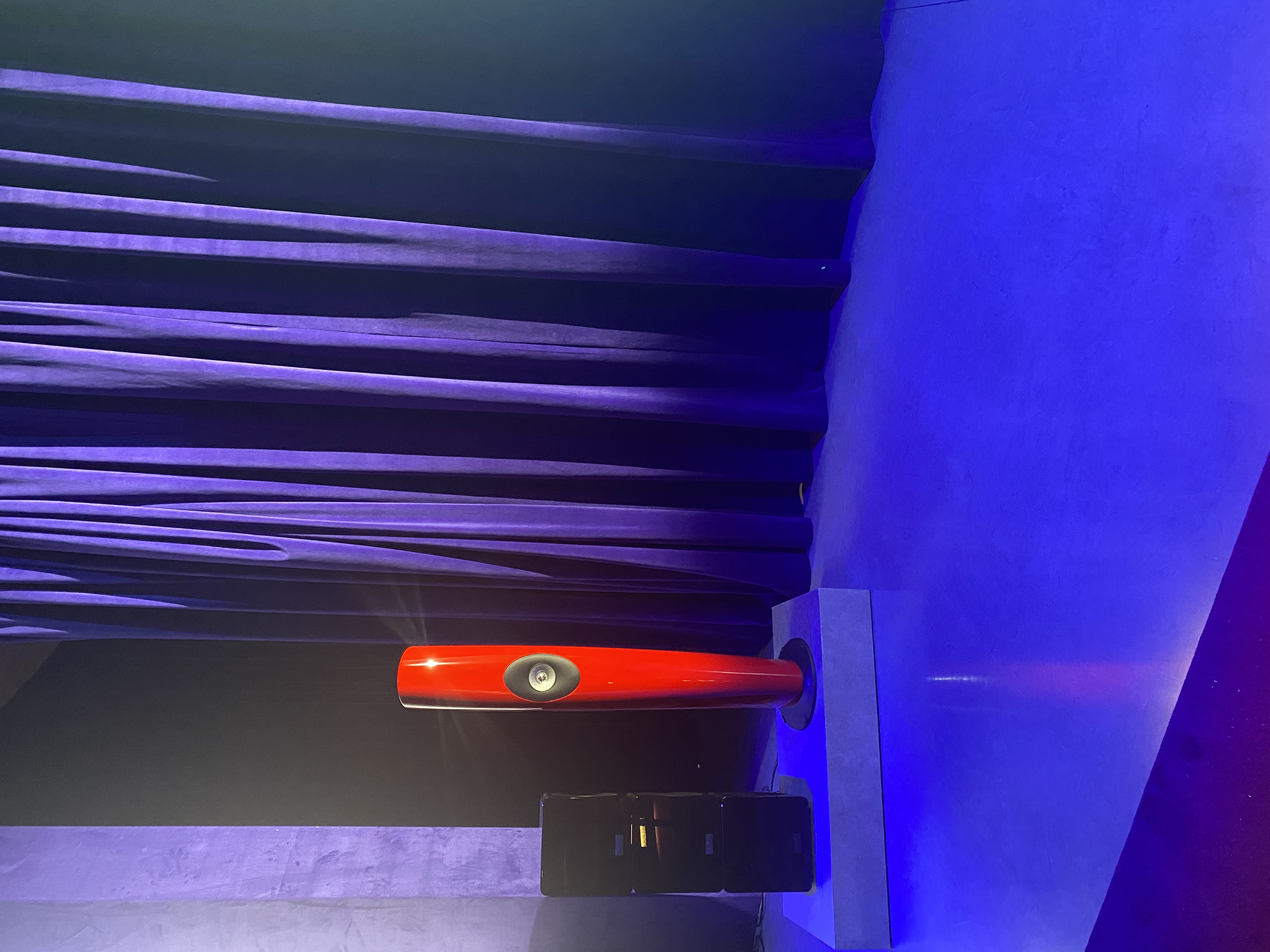
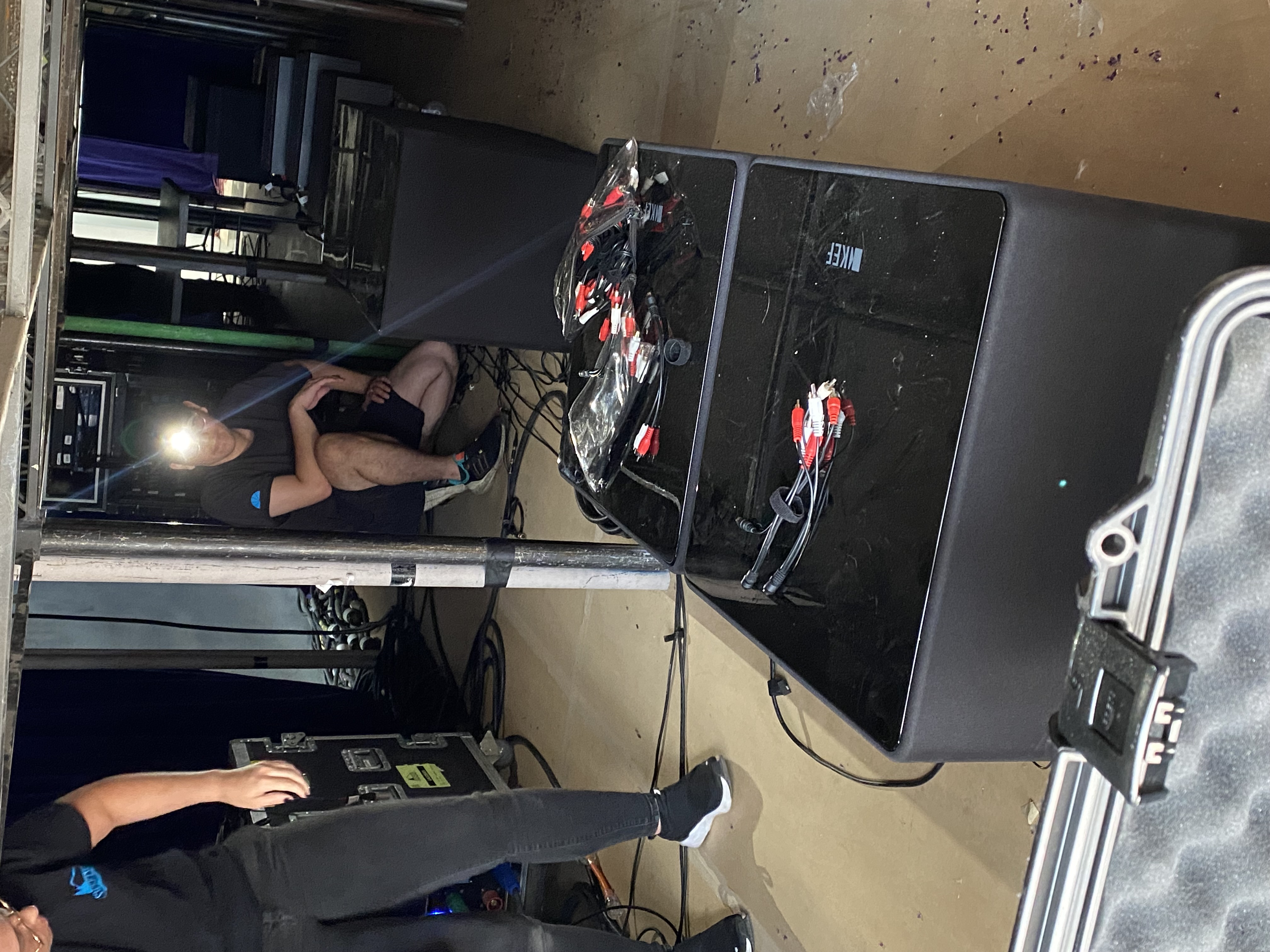
MS: Tell me a little bit about working with KEF and how we got to have this sound system in the Gagosian theater that was built for the premiere.
Kaphar: I've known about KEF speakers for a long time. I tried really hard to ignore them. I consciously tried to ignore KEF speakers. The reason I consciously tried to ignore KEF speakers because the ones I wanted were just so far out of my price range! The thing that's extraordinary about KEF is the sound. Everybody knows about the clarity, everybody knows that, but the design! I'm a painter. I'm a sculptor, so that was one of the first things. Like these are sculptural objects that sound comes out of [and] that’s pretty extraordinary. Whether it’s a Donald Judd reference in those black subwoofers [Kube 15 MIE] we used underneath the theater to make everybody rumble [Judd was an influential American artist in the minimalist style]. Man, I can't tell you how many people told me about the experience of those subs underneath [the seating]. It was pretty fantastic. Or whether it's a Brancusi sculpture that you're referencing with [the Blades]. [Constantin Brancusi was a Romanian sculptor and painter and is considered a pioneer in the modernism movement].
Kaphar: For me, I'm looking at these speakers as not just vehicles for sound. They are art objects themselves. That's a super rare thing, so I avoided looking at them initially because I was just like, I can't get the ones that I want. Then the opportunity presented itself to go visit the KEF Music Lounge [in New Jersey]. To call it a showroom is a misnomer, because it's not [just] that. You open this door and then you open another door and you're in a house. You're in the coolest modern house you've ever seen, and every space has the most beautiful speakers. There's a TV, there's a kitchen, there's an office area, there's a theater. All of this stuff in this random office building in the middle of New Jersey, it's kind of a trip, actually. But the sound! The speakers have been installed perfectly, so you get what I think is the best experience from these speakers. Anne Verhallen, who works with me on all of my brand partnerships told me she would go and check it out and then report back and I said what? Wait, wait. I said, ‘well, why in the world do you think I'm not coming with you.’ She's like, okay, I'll schedule an hour and we were there, I don't know, three or four hours. It was absolutely amazing and that's when I completely fell in love with the brand.
Installing the eight Kube 15 MIE subwoofers under the audience riser.
Kaphar: I've known about KEF speakers for a long time. I tried really hard to ignore them. I consciously tried to ignore KEF speakers. The reason I consciously tried to ignore KEF speakers because the ones I wanted were just so far out of my price range! The thing that's extraordinary about KEF is the sound. Everybody knows about the clarity, everybody knows that, but the design! I'm a painter. I'm a sculptor, so that was one of the first things. Like these are sculptural objects that sound comes out of [and] that’s pretty extraordinary. Whether it’s a Donald Judd reference in those black subwoofers [Kube 15 MIE] we used underneath the theater to make everybody rumble [Judd was an influential American artist in the minimalist style]. Man, I can't tell you how many people told me about the experience of those subs underneath [the seating]. It was pretty fantastic. Or whether it's a Brancusi sculpture that you're referencing with [the Blades]. [Constantin Brancusi was a Romanian sculptor and painter and is considered a pioneer in the modernism movement].
Kaphar: For me, I'm looking at these speakers as not just vehicles for sound. They are art objects themselves. That's a super rare thing, so I avoided looking at them initially because I was just like, I can't get the ones that I want. Then the opportunity presented itself to go visit the KEF Music Lounge [in New Jersey]. To call it a showroom is a misnomer, because it's not [just] that. You open this door and then you open another door and you're in a house. You're in the coolest modern house you've ever seen, and every space has the most beautiful speakers. There's a TV, there's a kitchen, there's an office area, there's a theater. All of this stuff in this random office building in the middle of New Jersey, it's kind of a trip, actually. But the sound! The speakers have been installed perfectly, so you get what I think is the best experience from these speakers. Anne Verhallen, who works with me on all of my brand partnerships told me she would go and check it out and then report back and I said what? Wait, wait. I said, ‘well, why in the world do you think I'm not coming with you.’ She's like, okay, I'll schedule an hour and we were there, I don't know, three or four hours. It was absolutely amazing and that's when I completely fell in love with the brand.
Installing the eight Kube 15 MIE subwoofers under the audience riser.
MS: Were you involved with the process of setting up the cinema from a soundscape standpoint?
Kaphar: No, not really. The President of film at my production company Revolution Ready, MC Michael VQ is the one who managed all that basically. I gave him some parameters. What I said is I want to make sure that the dialogue is as clear as it's ever been because we've shown the film in different theaters and it's been really problematic. And I said I wanna feel it. Jherek composed with 808’s and sub bass very subtly into the score and we have never felt that before [this installation]. And so those were basically the parameters I gave him. And then the KEF team came out and spec’d the space before we had even started and designed the whole system to do precisely that. The people who were in the theater last night all spoke about the sound and how great it was. My wife, in fact, was one of the first people to say that the sound quality was so different from any time we've seen it. We showed the film at Sundance. It was a great, great opportunity to show the film at Sundance. We had a great time. Lots of people [at each] show and the entire time I was kind of just clenching my fist. I was so frustrated because the sound quality was just really bad. The space we were in is actually a high school gym auditorium. And so it's not really their fault. It's unreasonable to think that in the amount of time they had that they could have put together a system that would have worked for that space. So, to have what we had [at the premiere] and have all my fancy friends come out and hear it with that level of quality was just great. To have Oprah sitting in the front row. To have Serena sitting in the front row. To have Harrison Barnes in the back, you know, to be able to share this film with them with the best sound quality it's ever had was really a dream come true.
Kaphar: No, not really. The President of film at my production company Revolution Ready, MC Michael VQ is the one who managed all that basically. I gave him some parameters. What I said is I want to make sure that the dialogue is as clear as it's ever been because we've shown the film in different theaters and it's been really problematic. And I said I wanna feel it. Jherek composed with 808’s and sub bass very subtly into the score and we have never felt that before [this installation]. And so those were basically the parameters I gave him. And then the KEF team came out and spec’d the space before we had even started and designed the whole system to do precisely that. The people who were in the theater last night all spoke about the sound and how great it was. My wife, in fact, was one of the first people to say that the sound quality was so different from any time we've seen it. We showed the film at Sundance. It was a great, great opportunity to show the film at Sundance. We had a great time. Lots of people [at each] show and the entire time I was kind of just clenching my fist. I was so frustrated because the sound quality was just really bad. The space we were in is actually a high school gym auditorium. And so it's not really their fault. It's unreasonable to think that in the amount of time they had that they could have put together a system that would have worked for that space. So, to have what we had [at the premiere] and have all my fancy friends come out and hear it with that level of quality was just great. To have Oprah sitting in the front row. To have Serena sitting in the front row. To have Harrison Barnes in the back, you know, to be able to share this film with them with the best sound quality it's ever had was really a dream come true.
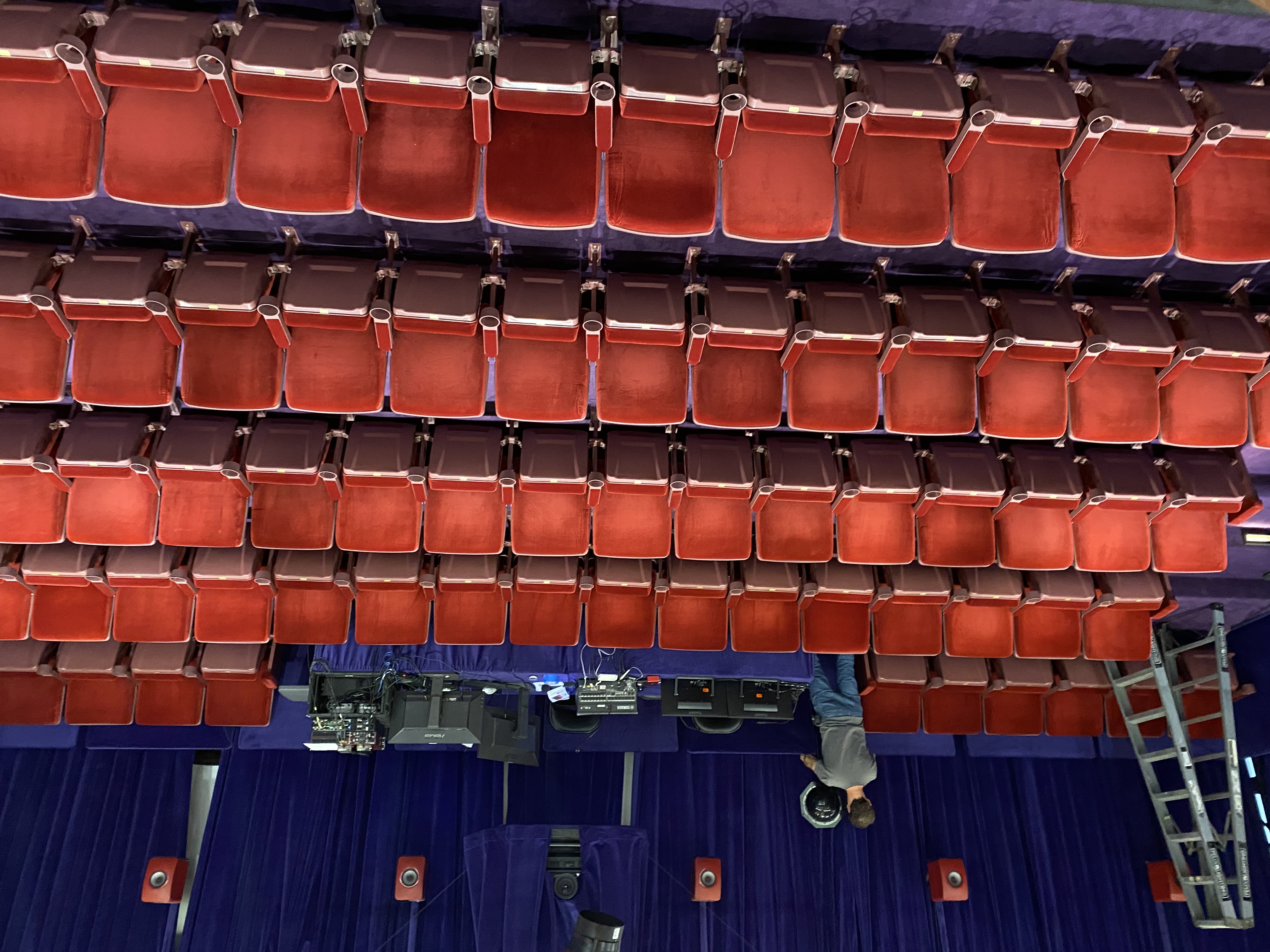
By Jack Sharkey for KEF



